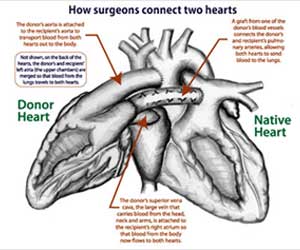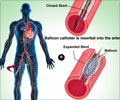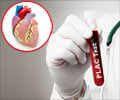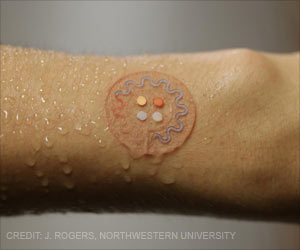Newly developed Artificial intelligence (AI) technology can identify people at high risk of a fatal heart attack at least 5 years before it strikes. Scientists developed a heart 'fingerprint' to tailor personalized treatment for people at high risk of deadly heart attack.
- New Artificial intelligence (AI) technology developed can identify people at high risk of a fatal heart attack
- The new biomarker or fingerprint called the fat radiomic profile (FRP) helps identify inflammation, scarring and changes that occur to perivascular blood vessels, which are all pointers to a future heart attack
- Using this new AI technology can predict people at risk of heart disease at least 5 years before it strikes
When someone goes to hospital with chest pain, a standard component of care is to have a coronary CT angiogram (CCTA). This is a scan of the coronary arteries to check for any narrowed or blocked segments. If there is no significant narrowing of the artery, which accounts for about 75 percent of scans, people are sent home, yet some of them will still have a heart attack at some point in the future. There are no methods used routinely by doctors that can spot all of the underlying red flags for a future heart attack.
Details of the Study
In this study, Professor Charalambos Antoniades and his team firstly used fat biopsies from 167 people undergoing cardiac surgery. They analysed the expression of genes associated with inflammation, scarring and new blood vessel formation, and matched these to the CCTA scan images to determine which features best indicate changes to the fat surrounding the heart vessels, called perivascular fat.
Next, the team compared the CCTA scans of the 101 people, from a pool of 5487 individuals, who went on to have a heart attack or cardiovascular death within 5 years of having a CCTA with matched controls who did not, to understand the changes in the perivascular space which indicate that someone is at higher risk of a heart attack. Using machine learning, they developed the FRP fingerprint that captures the level of risk. The more heart scans that are added, the more accurate the predictions will become, and the more information that will become 'core knowledge'.
Results of the Study
Professor Charalambos Antoniades, Professor of Cardiovascular Medicine and BHF Senior Clinical Fellow at the University of Oxford, said:
"Just because someone's scan of their coronary artery shows there's no narrowing, that does not mean they are safe from a heart attack. By harnessing the power of AI, we've developed a fingerprint to find 'bad' characteristics around people's arteries. This has huge potential to detect the early signs of disease, and to be able to take all preventative steps before a heart attack strikes, ultimately saving lives. We genuinely believe this technology could be saving lives within the next year."
Professor Metin Avkiran, Associate Medical Director at the British Heart Foundation said:
"Every 5 minutes, someone is admitted to a UK hospital due to a heart attack. This research is a powerful example of how innovative use of machine learning technology has the potential to revolutionize how we identify people at risk of a heart attack and prevent them from happening.
This is a significant advance. The new 'fingerprint' extracts additional information about underlying biology from scans used routinely to detect narrowed arteries. Such AI-based technology to predict an impending heart attack with greater precision could represent a big step forward in personalized care for people with suspected coronary artery disease."
Source-Eurekalert
















